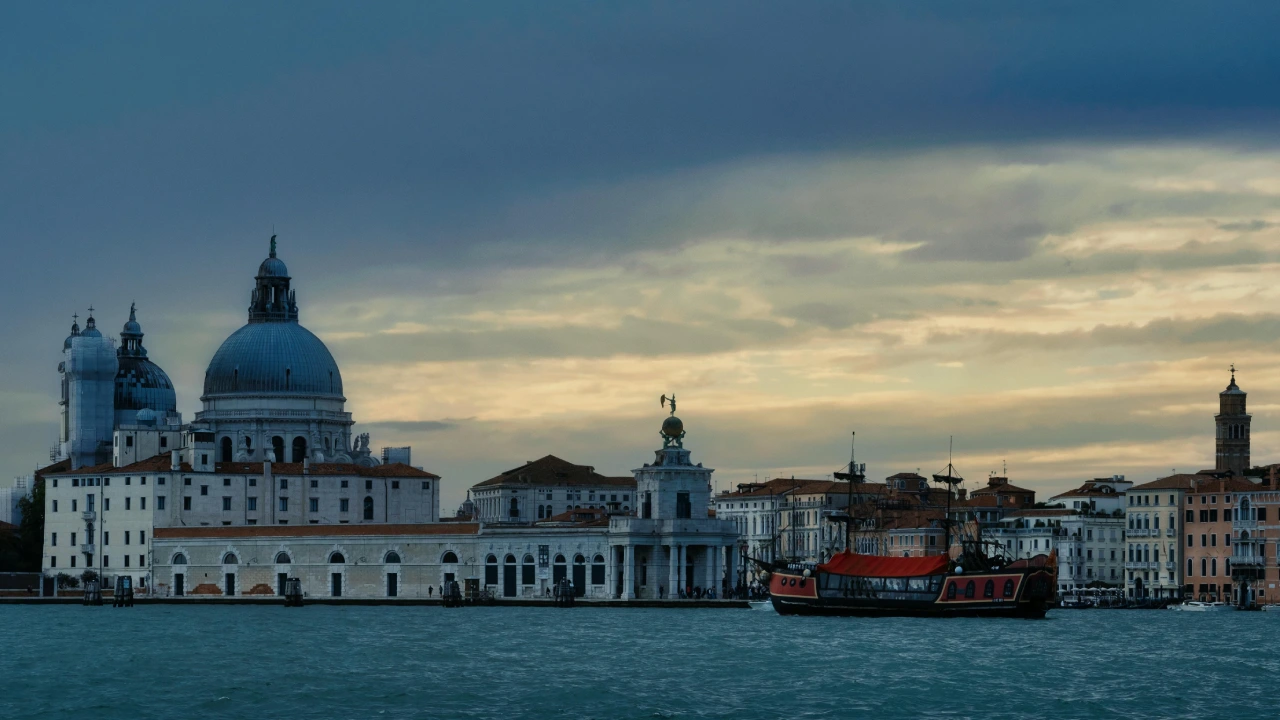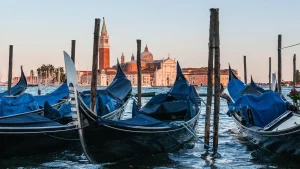Do People Still Live in Venice? Inside the City’s Silent Exodus and Hope for Renewal
Step into Venice and it feels like stepping into a dream. Canals replace roads, palaces rise from the water, gondolas glide silently through the mist. But stay a little longer — and you’ll notice something strange.
The souvenir shops are full. The alleys are crowded. Apartments glow with Airbnb keypads instead of family nameplates. And then comes the question every observant visitor eventually asks:
“Where are the Venetians?”
The truth is sobering: Venice is losing its people faster than almost any city in Europe. The historic center that once housed more than 175,000 residents now counts fewer than 50,000 — and the number keeps falling. Locals call it the Venexodus.
This article explores why Venetians are leaving, how it affects daily life and traditions, and what can still be done to save the city from becoming a stage set — a living postcard with no one left behind the windows.
📉 Part 1 — A City Shrinking Over Time
1.1 The Numbers Behind the “Venexodus”
- 1950s: Around 175,000 residents lived on the historic islands.
- 1980: Population dropped to roughly 100,000.
- 2000: Fewer than 70,000 remained.
- Today: Below 50,000 — and still declining each year.
On paper, Venice remains one of the world’s most famous cities. In reality, it’s also one of Europe’s most rapidly depopulating ones.
1.2 Why It Matters
Venice is not a museum. It was built to be lived in — a city of families, festivals, and daily rhythms. When residents vanish, the city risks losing its essence:
- Schools close for lack of children.
- Local bakeries and hardware stores are replaced by souvenir stalls.
- Ancient traditions fade when younger generations move away.
Without Venetians, Venice becomes what many fear most — a beautiful ghost city.
💔 Part 2 — Why Venetians Leave
2.1 The Housing Crisis
Housing is the biggest driver of depopulation. Tourism has made real estate nearly unaffordable for locals:
- Many apartments have been converted into short-term rentals.
- Owners can earn in two weeks from tourists what a family would pay in a month.
- Prices and taxes rise far beyond what teachers, artisans, or young professionals can manage.
As one Venetian teacher once sighed, “I can rent to tourists for two weeks or to a family for a month. Which would you choose?”
The result: more lights for visitors, fewer lights for residents.
2.2 Fewer Services, More Struggles
Living in Venice can be breathtaking — but also exhausting. Everyday life means:
- Carrying groceries across bridges and through alleys.
- Limited access to healthcare and emergency services.
- Schools shrinking or closing for lack of students.
For families with young children, moving to the mainland — Mestre, Marghera, or Treviso — simply feels easier.
2.3 Tourism Pressure
Venice receives more than 20 million visitors a year. On some days, tourists outnumber residents 400 to 1.
- Narrow streets become human traffic jams.
- Shops for locals give way to souvenir stands.
- Cruise passengers flood the city for a few hours, then depart.
Many residents say they feel like extras in someone else’s movie. Everyday life happens in slow motion between waves of strangers with cameras.
2.4 Limited Job Opportunities
Tourism dominates the economy. Most available work is seasonal — hotels, restaurants, or souvenir retail. There are few opportunities for careers in tech, education, or industry.
Young Venetians, especially graduates, leave for Milan, Rome, or abroad. They love their city, but it doesn’t love them back economically.
2.5 Flooding and Climate Fatigue
For decades, acqua alta (high water) has damaged homes, shops, and morale. Insurance is expensive; clean-up is endless. Even though the MOSE system now protects Venice from catastrophic floods, years of water damage have already driven many away.
Some residents simply gave up after the record-breaking flood of 2019, when the tide rose to 187 cm — the worst since 1966.
🏙️ Part 3 — Daily Life for the Venetians Who Stay
3.1 The Emptying Campi
Each Venetian neighborhood, or sestiere, centers around a campo — a square once filled with laughter, gossip, and children playing football. Today, many stand silent.
- Fewer children mean shuttered schools.
- Older residents dominate the benches.
- Shops cater to tourists, not neighbors.
In some areas, it’s possible to walk for minutes without hearing Italian — let alone Venetian dialect.
3.2 Logistics of Living
Venice’s beauty hides immense logistical challenges:
- No cars — every delivery arrives by boat or handcart.
- Rubbish collection is done on foot, door to door.
- Moving furniture requires hiring a special barge.
For elderly residents or busy families, daily life becomes a marathon of stairs, bridges, and tides. Yet those who stay say they wouldn’t live anywhere else — because no city feels quite like home the way Venice does.
3.3 The Spirit That Remains
Venetians are famously resilient. They keep their city alive through tradition and togetherness:
- Festivals like Festa del Redentore and Regata Storica still unite neighborhoods.
- Locals gather at osterie and bacari for cicchetti and laughter.
- Community groups organize clean-ups, concerts, and children’s rowing clubs.
Those who remain see themselves as guardians — holding on until the next generation finds a way back.
⚠️ Part 4 — The Ripple Effects of Depopulation
4.1 On Schools
- Smaller class sizes and fewer teachers.
- Closures or mergers due to low enrollment.
- Less cultural continuity for future generations.
4.2 On Businesses
- Grocery stores and family shops close down.
- Replaced by souvenir outlets or fast-food stands.
- Residents travel farther — or to the mainland — for essentials.
4.3 On Crafts and Culture
When young Venetians leave, so do the apprentices who might carry on centuries-old arts. Murano glass, Burano lace, and mask-making depend on continuity — on hands learning from older hands.
Without that chain, crafts become museum pieces rather than living skills.
4.4 On the City’s Soul
Venice without Venetians would still be visually stunning — but emotionally hollow. It risks becoming a luxury film set where history is staged but not lived. A place admired by millions but inhabited by ghosts.
👥 Part 5 — Stories of Those Who Left
Marta, 29 — The Graduate Born near Rialto, Marta dreamed of working in finance. But Venice offered only tourism jobs. She moved to Milan. “I love my city, but ambition doesn’t fit here anymore.”
Lorenzo, 40 — The Father With two small children, Lorenzo tired of carrying strollers over bridges and fighting crowds. He moved to Mestre. “It’s not as beautiful, but it’s livable.”
Anna, 55 — The Shopkeeper Her fruit stand in Cannaregio couldn’t compete with souvenir shops. She closed and reopened in Treviso. “At least there, people buy apples again.”
🔧 Part 6 — What’s Being Done to Stop the Decline
6.1 Tourist Entry Fee
In 2024, Venice introduced an entry fee for day-trippers — the first city in the world to do so. The aim: manage crowds, fund city services, and encourage longer stays rather than mass day visits.
6.2 Restricting Cruise Ships
Large cruise ships are now banned from the San Marco basin and the Giudecca Canal. They dock instead at Marghera, easing physical and environmental pressure on the fragile heart of the city.
6.3 Housing Reforms (Still Debated)
Officials are exploring:
- Limits on short-term rental licenses.
- Tax incentives for landlords who rent to residents.
- Affordable housing projects on the mainland with fast lagoon connections.
6.4 Supporting Artisans and Authenticity
Initiatives promote traditional crafts through certified workshops and tourism partnerships, protecting jobs while preserving identity.
At Tour Leader Venice, we proudly collaborate with local masters — from Murano glassblowers to mask-makers and print artisans — ensuring your visit supports real Venetians, not factories abroad.
💡 Part 7 — How Travelers Can Help
- Stay overnight — contribute to the local economy instead of rushing through on a day trip.
- Book certified local guides — our private Venice tours reveal daily life beyond the crowds.
- Buy authentic crafts — glass, lace, or masks handmade by Venetians.
- Be considerate — avoid blocking bridges, respect residential areas, and greet locals with a smile.
- Learn a few words of Italian or Venetian — a small gesture that opens big hearts.
Every respectful traveler helps Venice survive — not just as a destination, but as a home.
💬 Discover Local Venice With a Private Guide →
🌱 Part 8 — Signs of Hope
Despite decades of decline, Venice has not surrendered. New ideas and initiatives are taking root:
- Start-ups bringing digital and remote jobs to the lagoon.
- Community cooperatives reopening neighborhood shops.
- Art residencies and sustainable tourism projects drawing younger generations back.
Venetians are nothing if not inventive. For a city built on water and willpower, rebirth has always been part of the story.
❤️ Conclusion — A City That Needs Its People
Venice has survived invasions, plagues, and floods — but its greatest challenge now is emptiness. Without Venetians, there is no Venice — only a memory of one.
Yet hope remains. By traveling consciously, supporting local families and artisans, and embracing authentic, private experiences, visitors can become part of the solution.
Venice doesn’t need saving from the water — it needs saving from indifference.
With Tour Leader Venice, you don’t just see the city; you meet the people who fight to keep it alive. You’ll visit their workshops, taste their recipes, and hear their stories — the ones not found in guidebooks.
🌊 Experience the Real Venice With Tour Leader Venice — Meet the Locals Who Keep It Alive →
Do people still live in Venice today?
Yes — about 50,000 residents still live within Venice’s historic islands, though the number is falling each year. Most Venetians who remain are deeply rooted families, artisans, and small business owners keeping traditions alive. You can meet them on Off-the-Beaten-Path Private Walking Tours that reveal real neighborhoods beyond the tourist flow.
Why are so many Venetians leaving the city?
Rising housing prices, limited jobs outside tourism, frequent flooding, and the growth of short-term rentals have pushed locals to the mainland. Everyday tasks — from grocery shopping to reaching school — are more complex here. Our article How Do Locals Live With So Many Tourists in Venice explores these pressures and the resilience of those who stay.
How can travelers help Venetians and support local life?
Stay overnight, shop from real artisans, and book private tours with licensed local guides who share authentic stories. Dine in family-run osterie, respect residential areas, and avoid mass day-trip itineraries. Conscious travelers give Venice its best chance to remain a living city — not just a postcard.







